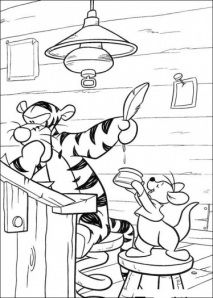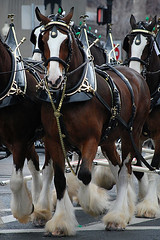Recently there has been a good deal of discussion going on about creativity: what it is, where it comes from, how it works, and how to get it to work better for you. Many articles have been written on how to encourage your imagination, how to feed your muse. As writers we depend on our imagination to craft our stories. Novelists most of all, but even non-fiction is enlivened by creative writing.
 In this article I’m not going to try to tell you how to build up your creative muscle, I’m going to do an analytical breakdown of the creative process I went through to write my last blog post. I’ll preface it by saying that this is not the process I use all the time: sometimes an article just springs into my mind, fully written, my only task is to record it before the words fade from my mind. Often these Inspired Writings occur at the most inopportune times: like 3:00 am. If I am able to ignore the call and go back to sleep I’ll remember that I had a wonderful idea, but won’t remember anything more about it. Opportunity lost!
In this article I’m not going to try to tell you how to build up your creative muscle, I’m going to do an analytical breakdown of the creative process I went through to write my last blog post. I’ll preface it by saying that this is not the process I use all the time: sometimes an article just springs into my mind, fully written, my only task is to record it before the words fade from my mind. Often these Inspired Writings occur at the most inopportune times: like 3:00 am. If I am able to ignore the call and go back to sleep I’ll remember that I had a wonderful idea, but won’t remember anything more about it. Opportunity lost!
Training Creativity
My last post was written as a guest post for Sirius Press Inc., and it was entitled Training Creativity. I wanted to do an article that was not a laundry list of creativity building exercises, I wanted something unique. I planned to use a writing technique that has often been successful for me before, probably the best example of this would be my Six Reasons to Stick with Legacy Publishing. With this technique I take a loaf of reverse psychology, rub it with sarcasm, and sprinkle it with enough mirth to make it palatable. I chose to use the same recipe here and bake up a piece that pretends to say that creativity is over rated and should be quashed in favor of technical skills.
The Initial Run
For the first run at this I wrote the article by reversing the major ways of spurring imagination and listing them as activities we must avoid.
When it was done I read it over a couple of times… and HATED it! It came off as mean spirited and cold. There was humor, but no warmth. The anti-thematic approach was not going to work this time. It needed to be warmer, more engaging.
The Second Run

I like animals; they can be very engaging. Perhaps using the idea of an animal as a beast of burden helping us in our task by pulling a load. Oxen? No! Horses are heart warming; horses and a wagon. The old Budweiser commercials with their Clydesdales came to mind. I did not get very far before I realized that I don’t know enough about training horses to make this workable.
The Third Run
Even if I were willing to invest hours into researching horse training methods, would my readers relate easily? Would the analogy make sense: maybe not. I needed something more familiar to my readers and myself. Dogs. I know dogs, most everyone can relate to dogs. What do dogs pull or carry? Dogsled? A team of dogs: Muse, Research, Prose and Grammar all must be taught to work together if the sled is to reach its destination?
No; still too unfamiliar and too complicated for a 500-600 word post. What then? Something simpler, and more engaging. One dog. Training one dog to do… tricks? A PUPPY! Everyone loves puppies. A puppy can be both heartwarming and exasperating as you try to form it into a suitable companion… perfect!
The Home Run
Now that I had a workable premise it was just a matter of selecting points around which to build the analogy. I tried several, cut a couple, tweaked the others and in the end settled on Housebreaking, Leash Training, Training to Come and Playtime, using a puppy named Muse. I was pretty happy with the result. Handed it off to my editor for a quick review, she tweaked it just a bit and I sent it to Terre. She said, “Allan, this is outstanding! I was smiling, engaged and intrigued from start to finish. Thank you, it’s going to be a hit :)”
Not a Cakewalk
This article went through several iterations before being sent off to the publisher, and it changed completely from my initial vision. But that is how creativity works sometimes. Sometimes genius falls on us from the sky, other times we must mine it out a shovelful at a time, trying different veins before we strike pay-dirt.
If you’d like to read the finished piece, click through to Training Creativity.
What about you: what processes does your muse use to infuse your writings with imagination?


Interesting process. I’m not sure i could clock my process most times.
Although recently, I can say how I came up with my smuggling scene–watched some Sherlock Holmes for inspiration and bugged my husband with it constantly until he came up with some morsels I could use. I’m glad it’s not always that difficult. Guess I wasn’t made to be a thief.
That’s good to know, Mary! 🙂
I always like things like the Oceans 11 movies and National Treasure. I have a Sherlock Holmes collection. It amazes me the way they come up with those plot twists.
A lot of the time I probably could not map out the process used in creating something, but in this case as I wrote Training Creativity a little voice in the back of my head nagged at me to take notes and build upon the article. Muse is such a good boy, yes he is!